Japan’s popularity among travelers comes as no surprise to anyone as the archipelago is overflowing with natural beauty, historical sites, delicious food, and unique experiences. Most itineraries are focused around the major cities of Tokyo, Kyoto, Hiroshima, and Osaka, and while those cities definitely deserve all the praise and attention they receive, with 47 prefectures that are divided into eight separate regions, Japan has way more to offer. The northeastern Tohoku region in particular packs just as much of a punch as its big-city counterparts — and with just a fraction of the crowds. While six distinct prefectures make up the Tohoku region, the three prefectures of Yamagata, Miyagi, and Iwate are easily reachable from Tokyo in a couple of hours on a Shinkansen and have a perfect mix of sights for every type of traveler. Whether you decide to visit just one of the prefectures or combine all three, here are the coolest things to do and see in each.

Lesser-Known Tohoku Is the Perfect Place to Experience Japan’s Tranquil Side
Yamagata Prefecture
Nature abounds across the Tohoku region but perhaps none more so than Yamagata Prefecture. It’s home to one of the most spiritual areas in all of Japan, the Dewa Sanzan, otherwise known as the Three Mountains of Dewa. The trio of mountains — Haguro, Gassan, and Yudono — is one of the homes of the Shugendo faith — a mix of Buddhism, Shintoism, and Taoism — and represents the present, past, and future respectively.
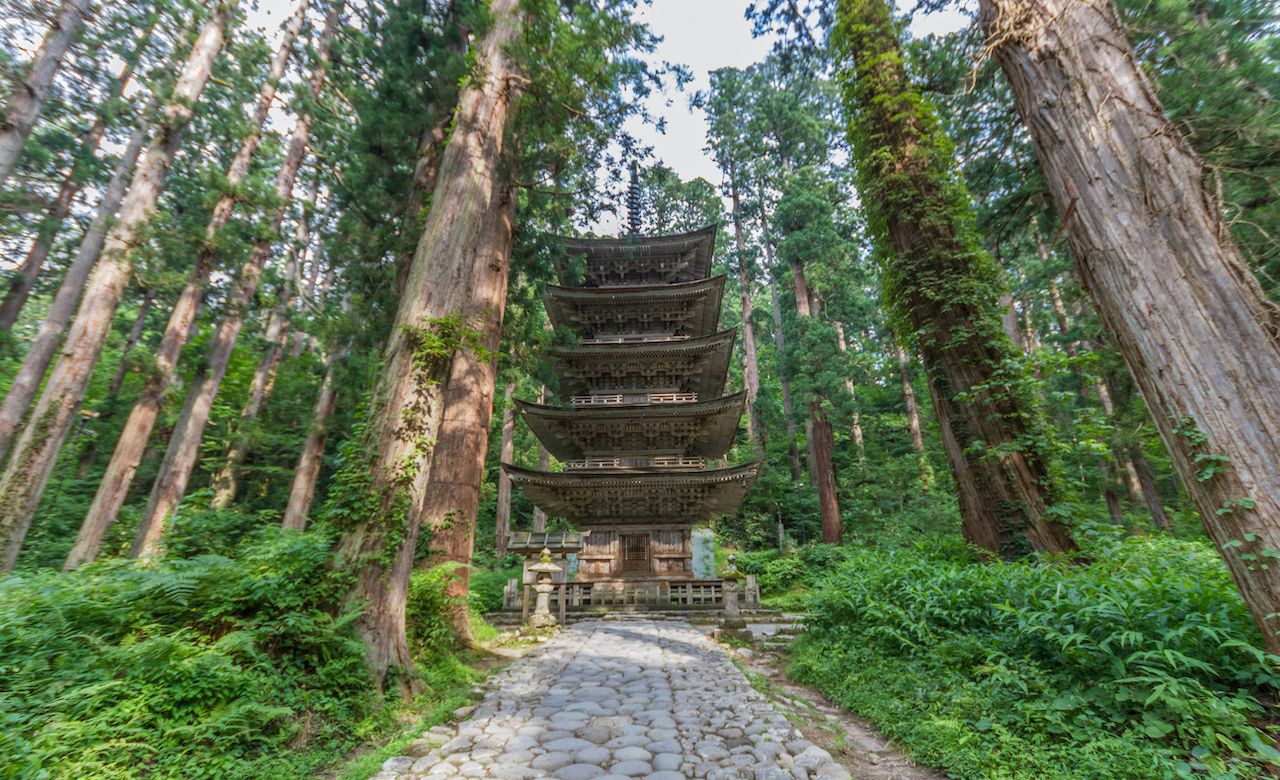
Photo: Manuel Ascanio/Shutterstock
It’s said that a Dewa Sanzan trek should begin in the present at Haguro. The hike is only a mile long, but visitors will pass through a forest of tall cedar trees and see multiple small shrines dedicated to different deities: the Jiji-sugi, or “Grandpa Cedar Tree,” which is the oldest giant tree at Haguro at over 1,000 years old; a five-story pagoda, which is the oldest pagoda in Tohoku and the structure on which the Tokyo Skytree was based on; and the Sanjin Gosaiden shrine at the summit, where all three mountain deities are enshrined. Living on Haguro are yamabushi, Shugendo mountain priests clad in white clothing who practice an ascetic lifestyle and frequently blow the conch shells they carry to protect the mountains and people from evil spirits. There’s a museum near the beginning of the trail for those that would like to learn more about the faith and Dewa.
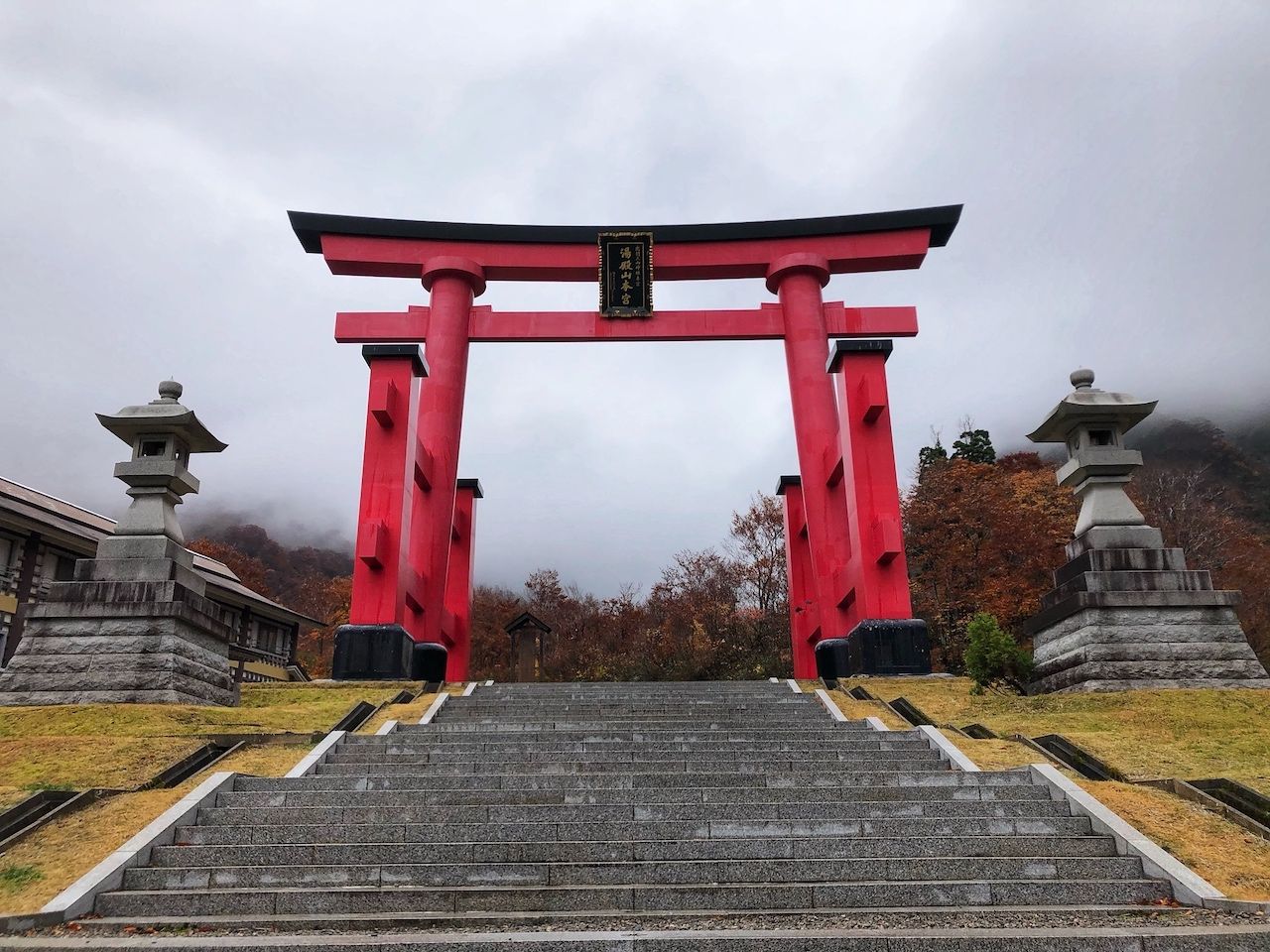
Photo: Aryana Azari
Next is Gassan, the tallest of the three mountains at 6,509 feet high. Visitors are able to take a bus from its base to the Eighth Station where they can then begin a three-hour hike through marshland and alpine meadows to the shrine at the summit. Last but not least is Yudono, with its hot springs and waterfalls. Visitors can either opt to take a bus from the base up to a parking lot close to the summit — though there is a final portion that requires some walking — or trek the entire way. Yudono is the most sacred, and because of that, no photos are allowed beyond the main torii gate, and talking of what one sees and does on it is prohibited. But rest assured, it’s beautiful, spiritually invigorating, and worth it.
In terms of accessibility, only Haguro is open year-round for hiking, with Gassan and Yudono open from summer to late fall. Buses run regularly throughout the week from nearby Tsuruoka Station to Haguro, from which you can take a bus to Gassan. Visiting Yudono is only possible on weekends, and you can either take a bus from Haguro or hike from Gassan, which will take about six hours.
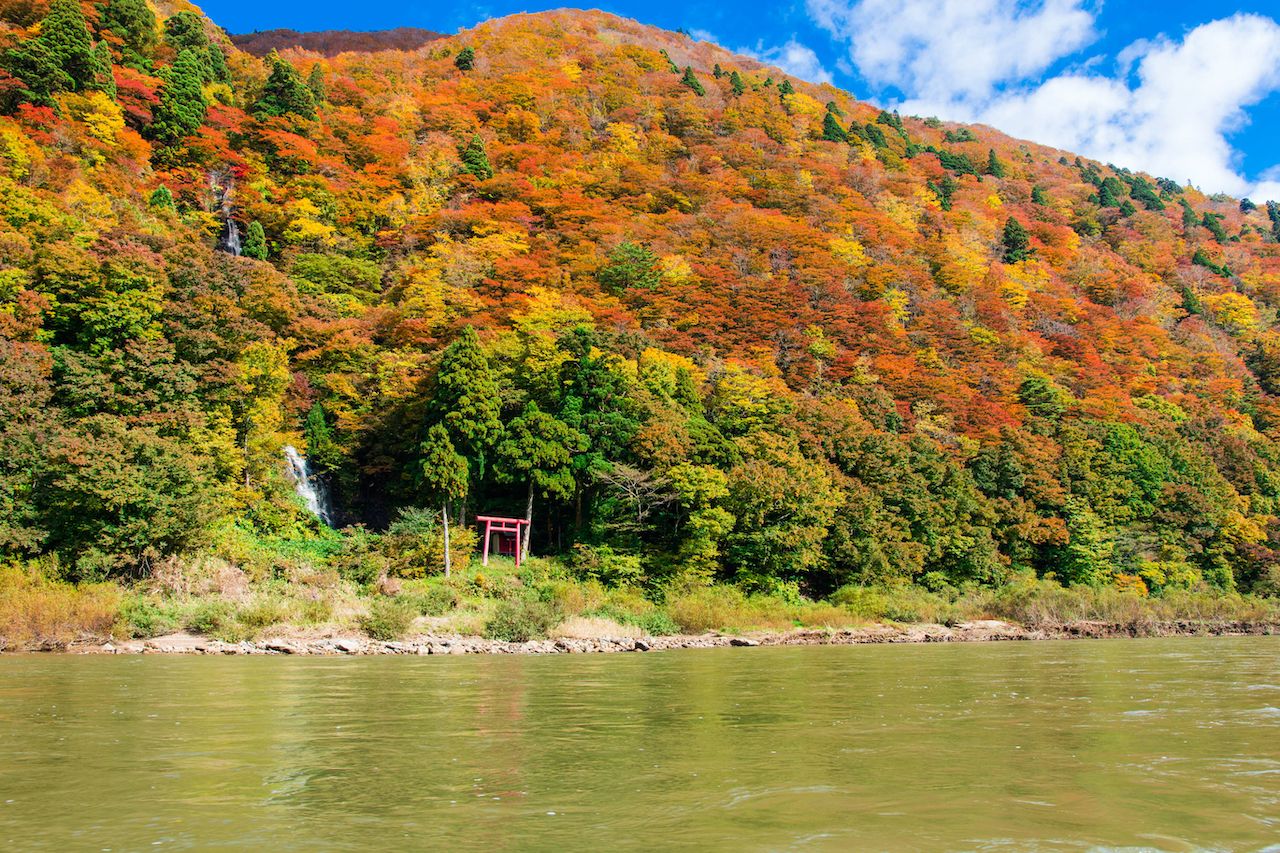
Photo: wandererronin/Shutterstock
Beyond the Dewa Sanzan is the Mogami River, one of the three fastest rivers in Japan that’s well-known for appearing in several of famous poet Matsuo Bashō’s haikus. A boat ride along it will allow visitors a chance to relax for an hour or two while taking in some of the scenery, which changes dramatically depending on the season. The longboats will usually be shared with other groups and are always led by a licensed guide who’ll sing traditional river songs throughout the trip. While drifting along the Mogami River you’ll spot waterfalls, torii gates, shrines, and even a floating convenience store that the boat will stop at — where things like meat skewers, cherry blossom ice cream, and sake are sold.
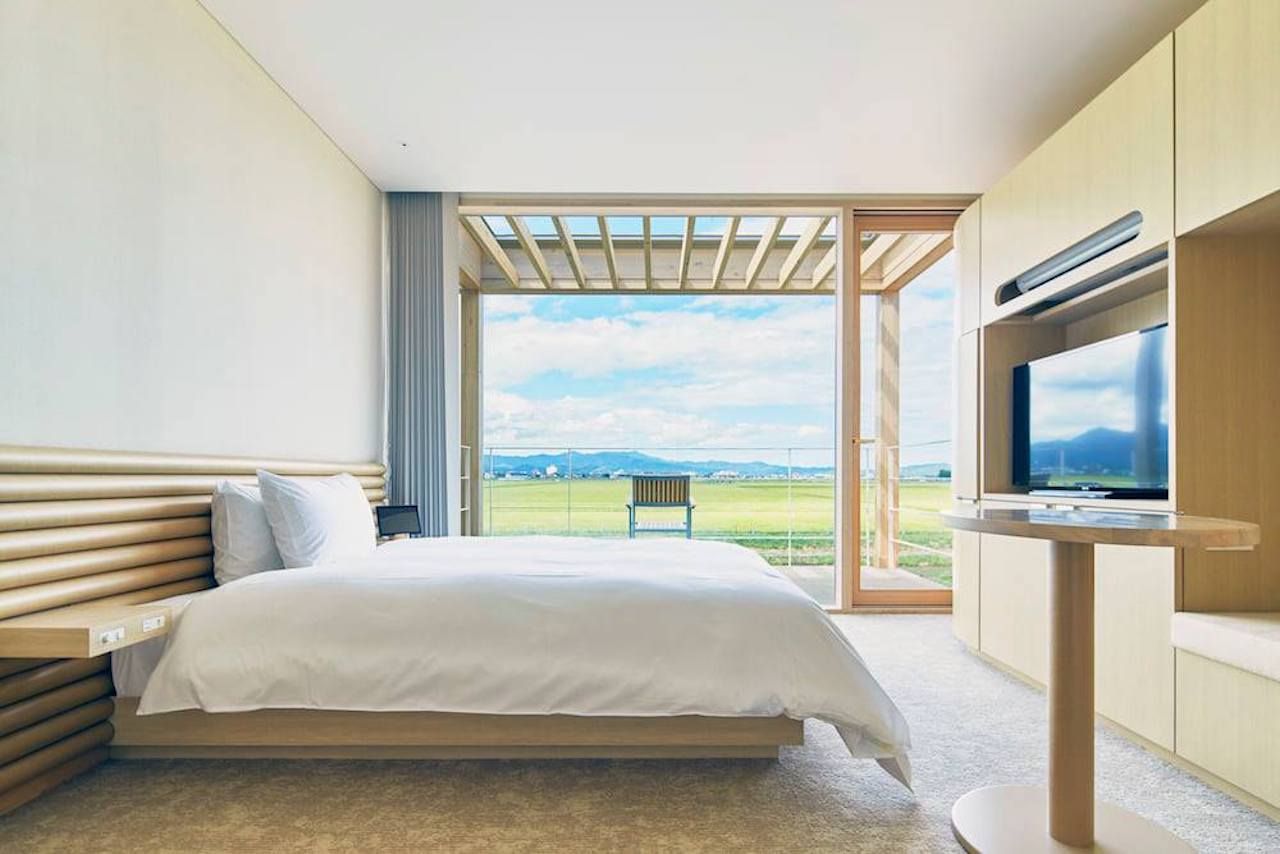
Photo: Shonai Hotel Suiden Terrasse/Facebook
To put yourself in the best position to see all Yamagata has to offer, you should either stay in the city of Tsuruoka, where you can experience things like eating Japanese-Italian food at Al Ché-cciano or sleep in a hotel that “floats” on rice fields; in one of the temple lodgings the Dewa Sanzan offers; or in Ginzan Onsen, a hot spring town that’s right near the border to Miyagi Prefecture.
Miyagi Prefecture
Where Yamagata is nature-oriented, Miyagi is more urban, geared toward culture and history. It’s in the Miyagi Prefecture that you’ll find yourself wandering museums, ruins, and historical sites while still getting in some of the great outdoors.
Miyagi’s capital is Sendai, the largest city in northeast Japan. As it was founded in 1600 by Date Masamune, a feudal lord part of the Date samurai clan, it would be a disservice not to begin a tour of the city by following its samurai roots. Start out with the ornately decorated Zuihoden mausoleum, the sacred burial site of the Date clan. Adjacent to the mausoleum is a small museum housing historical documents and details of the archaeological work done around the site. Just a short distance away is the Sendai City Museum, a larger museum that holds artifacts pertaining to Sendai’s history, including Date Masamune’s armor and helmet; while not confirmed, the all-black, over-400-year-old armor is said to have inspired Darth Vader’s outfit in Star Wars.

Photo: Aryana Azari
The museum is located on the grounds of the former Sendai Castle, also known as Aoba Castle, built by Masamune. Its location on Mount Aoba was chosen specifically for its strategic defensive position, towering around 300 feet over Sendai, with protection on nearly all sides by cliffs and forest. Years of natural disasters chipped away at the castle, leaving only a single lookout tower and the outer walls. A statue of Masamune on his horse was erected on the site in his honor and still stands to this day. Beyond the ruins is a lookout point where all of Sendai can be seen. Interspersed between all the buildings are hundreds of trees, providing insight into why Sendai’s nickname is the “City of Trees.”
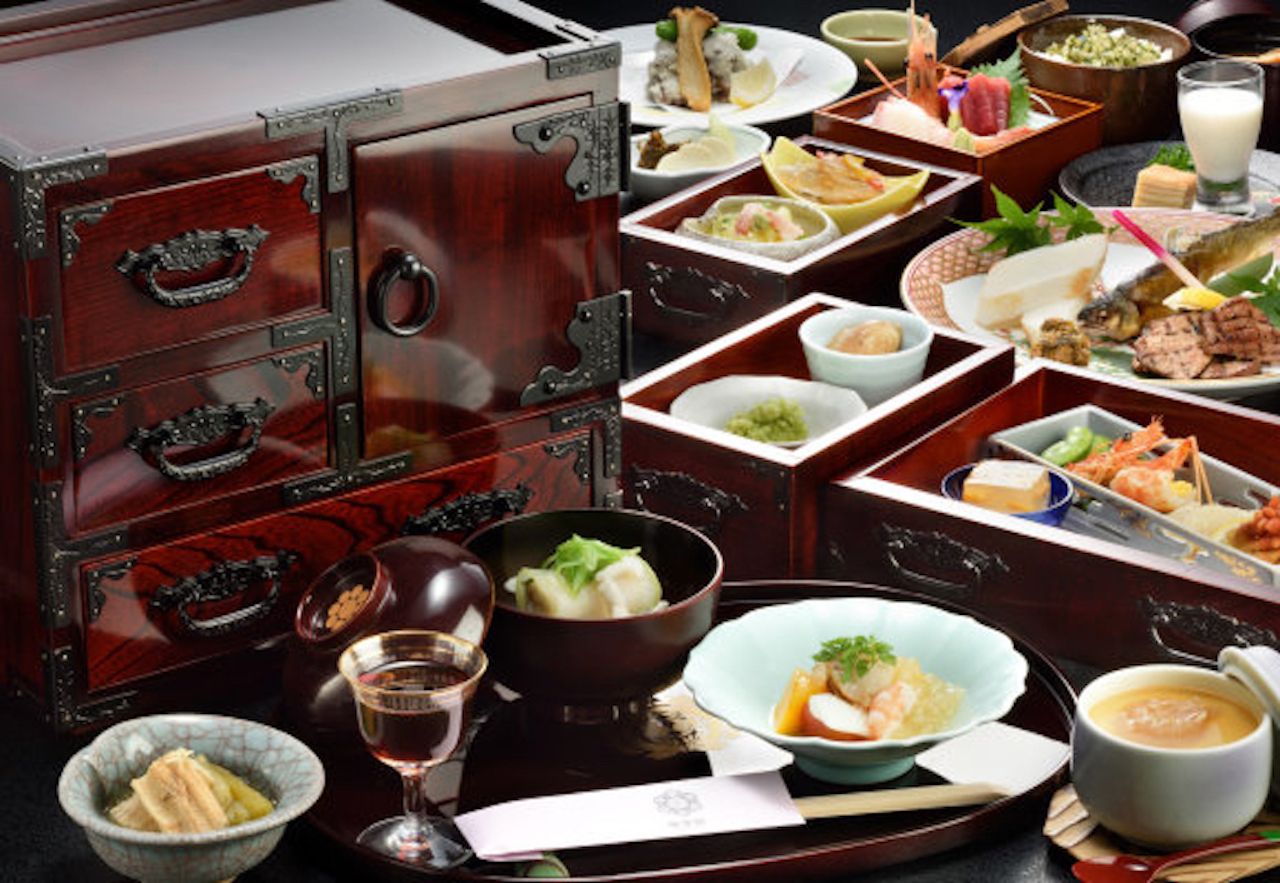
Photo: Shoukeikaku
All of the Date sites in Sendai can be reached by the Loople bus, which has a single route that loops through all of Sendai’s major tourist spots, such as Jozenji-dori Avenue, the Museum of Natural History, and the Miyagi Museum of Art. If you’re willing to trek out to Sendai’s outskirts, however, then visiting Shoukeikaku to fuel up is a must. Now a restaurant, Shoukeikaku was the Date clan’s former residence. The restaurant’s specialty is multiple dishes served in a traditional, handcrafted Sendai tansu (a chest of drawers). Reservations are required, and it’s a little pricey, but the unique experience is well worth the money. Sendai is also known for its nightlife scene, with alleys upon alleys full of izakayas just waiting for barhoppers.
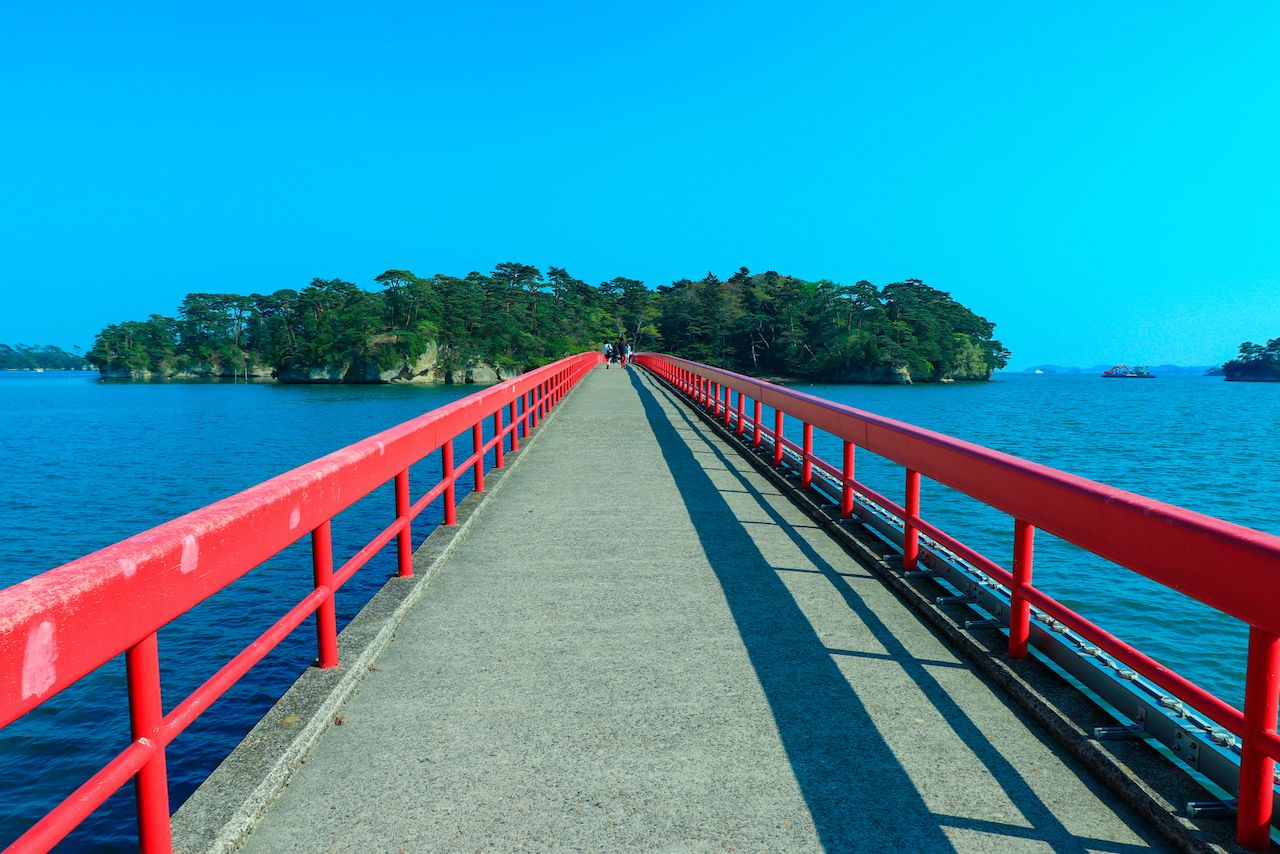
Photo: hiroyuki_K/Shutterstock
Just an hour from Sendai is the coastal city of Matsushima, more akin to a laid-back beach town than an urban hub — perfect for relaxation and sightseeing at an easygoing pace. There are several Date-related sites here as well, like Zuiganji, a Zen Buddhist temple that Masamune appointed as his family’s temple; the Date Masamune Historical Museum, which follows Masamune’s entire life; and Entsuin Temple, built by Date Terumune, with sprawling gardens that look especially magical when the leaves are lit up during an annual event every fall.
While visiting Matsushima can be done as a day trip from Sendai, it’s worth a few days’ time to explore some of the 260 islands in its bay and allow for proper relaxation if that’s what you’re after. Ferry and cruise services around the islands are available, though three of them are accessible on foot via long bridges. The bridge connecting Matsushima to Fukuura Island has a legend attached to it that says if you cross it, you’re likely to meet the love of your life.
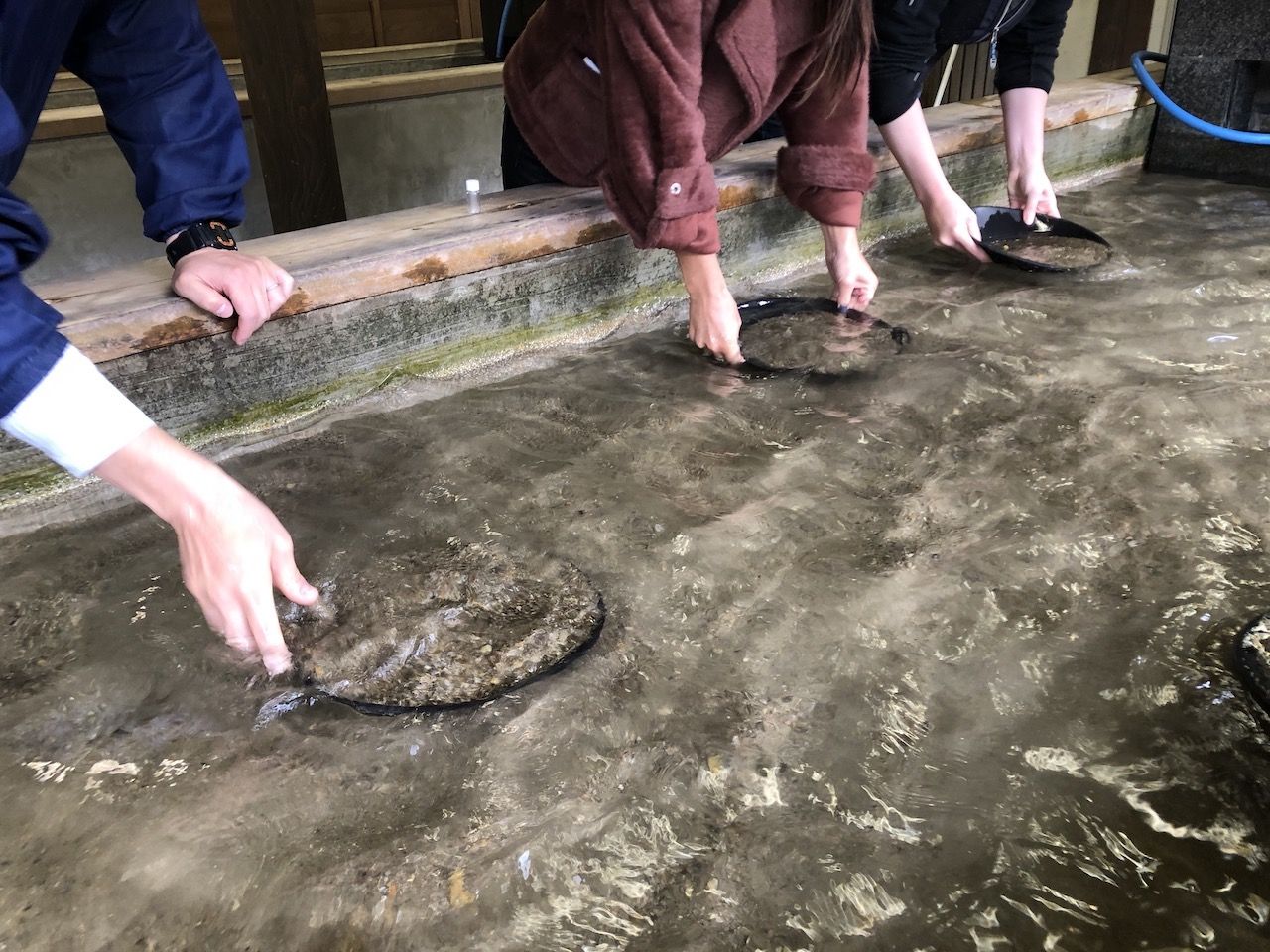
Photo: Aryana Azari
For those unwilling to try their luck at love in Matsushima, then panning for gold is the next best bet. A similar distance away from Sendai as Matushima is Wakuya, a small town of about 20,000 residents, famous for being the place where gold was first mined in Japan over 1,000 years ago. The town set up a museum detailing the history of gold in Japan, Tempyo Romankan, which also offers visitors a chance to go gold panning and keep any gold they’ve found.

Photo: Aryana Azari
Adjacent to the museum is a small but idyllic park that, if you follow along the path for a few minutes, leads to the Koganeyama Shrine, dedicated to deities of money, fortune, and prosperity. To the left of the shrine is the Kugane tea house and garden, where you can partake in a traditional Japanese tea ceremony and try some matcha and sweet treats. The tea house also has a room with a wall covered in gold leaf.
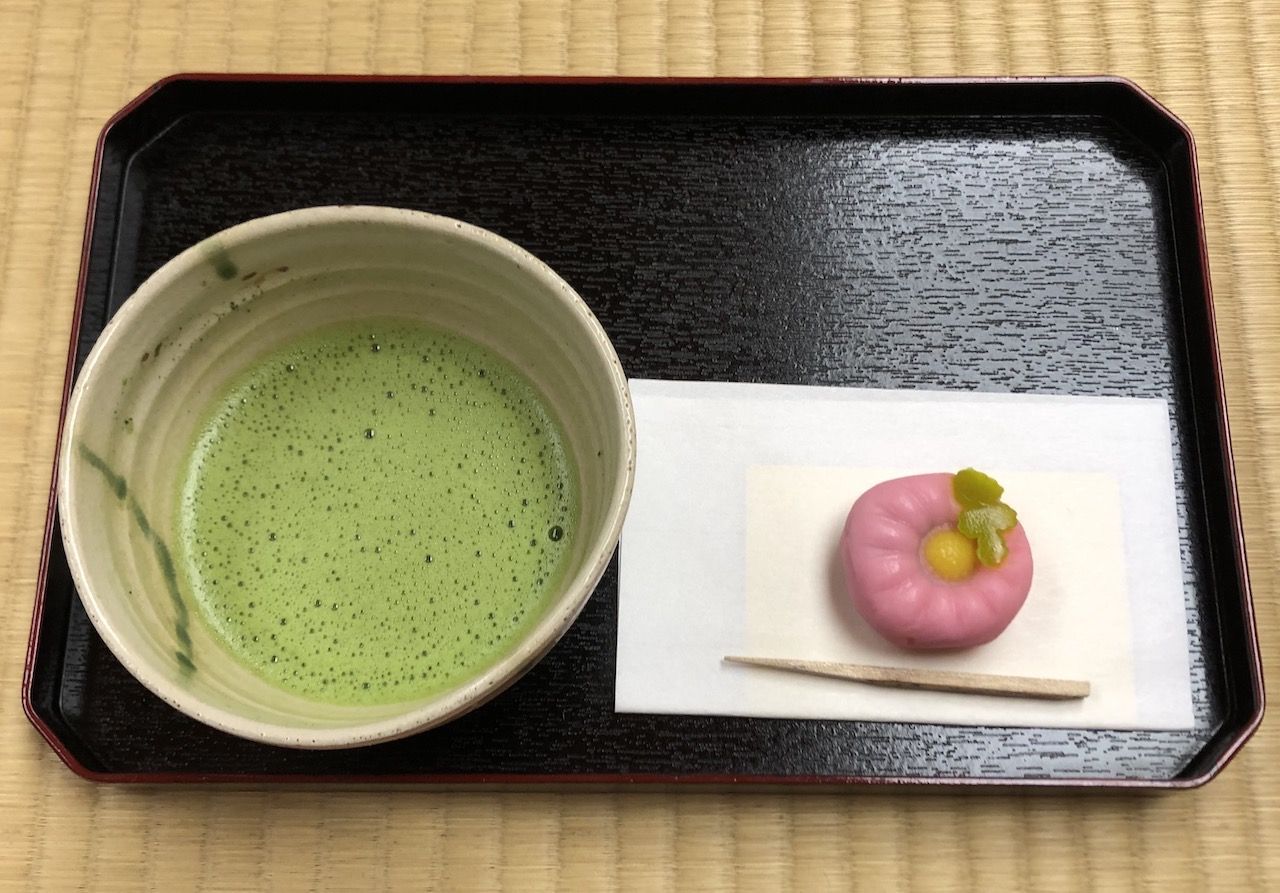
Photo: Aryana Azari
Visiting Wakuya allows you to head straight on to Iwate Prefecture. If you’re staying in Sendai, it’s a good idea to stay near Sendai Station so you can easily access the train system, both Shinkansen and local, and explore the rest of Tohoku. If you really want to be close, there’s Hotel Metropolitan, three-star digs literally inside the station. It’s important to keep in mind that train stations in Japan close overnight, so you’ll have to go through a different entrance if you decide to stay out late. While the hotel is clean, comfortable, and won’t break the bank, there are other nearby accommodation options from capsule hotels to more luxe options, should you desire an alternative.
Iwate Prefecture
Whether or not you came out a winner at Wakuya, celebrate (or drown your sorrows) in Iwate Prefecture. Iwate is big on agriculture, being a major rice-producing region with some of the purest water, which lends itself to making some of the highest-quality rice products in Japan. One such product we all know and love is sake, for which Iwate is famous.
There are a number of sake breweries that offer tours of their facilities, as well as tastings. One such brewery is Sekinoichi, which dates back to the Edo period and has since branched into craft beer. It has a large tasting area where you can try different types of sake, from dry to sweet and everything in between, and the shop sells all of Sekinoichi’s products. On the same site as the brewery is a museum where visitors can learn all about brewing and a restaurant that serves local cuisine and different types of sake.
Another well-known rice product that Iwate is famous for is its mochi, a glutinous rice cake with a taste that can either be sweet or savory depending on the added ingredients and toppings. The city of Ichinoseki in Iwate is known as the holy ground of mochi, and every year it holds the Mochi Festival (formerly known as the Mochi Summit), where people from all over Japan come together to show off their local mochi.
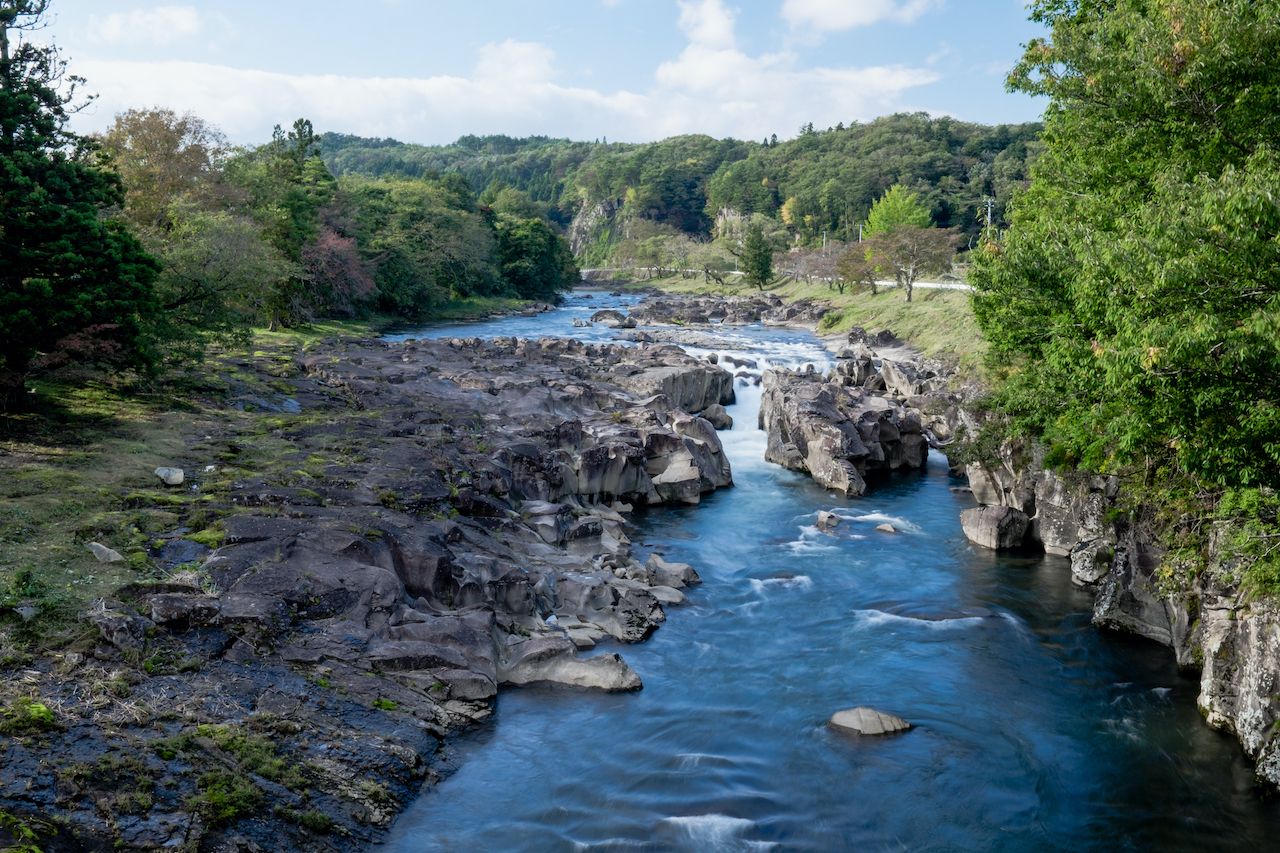
Photo: mrandre/Shutterstock
While mochi can be tried in many places around the world now, one of the coolest ways to try it is by visiting Geibikei Gorge in Ichinoseki. The gorge itself, part of the Iwai River, is a magnificent natural geological formation about 1.5 miles long. Boat tours through the gorge, either 30 or 70 minutes long, are offered, but you’ll also want to visit on foot for the mochi.
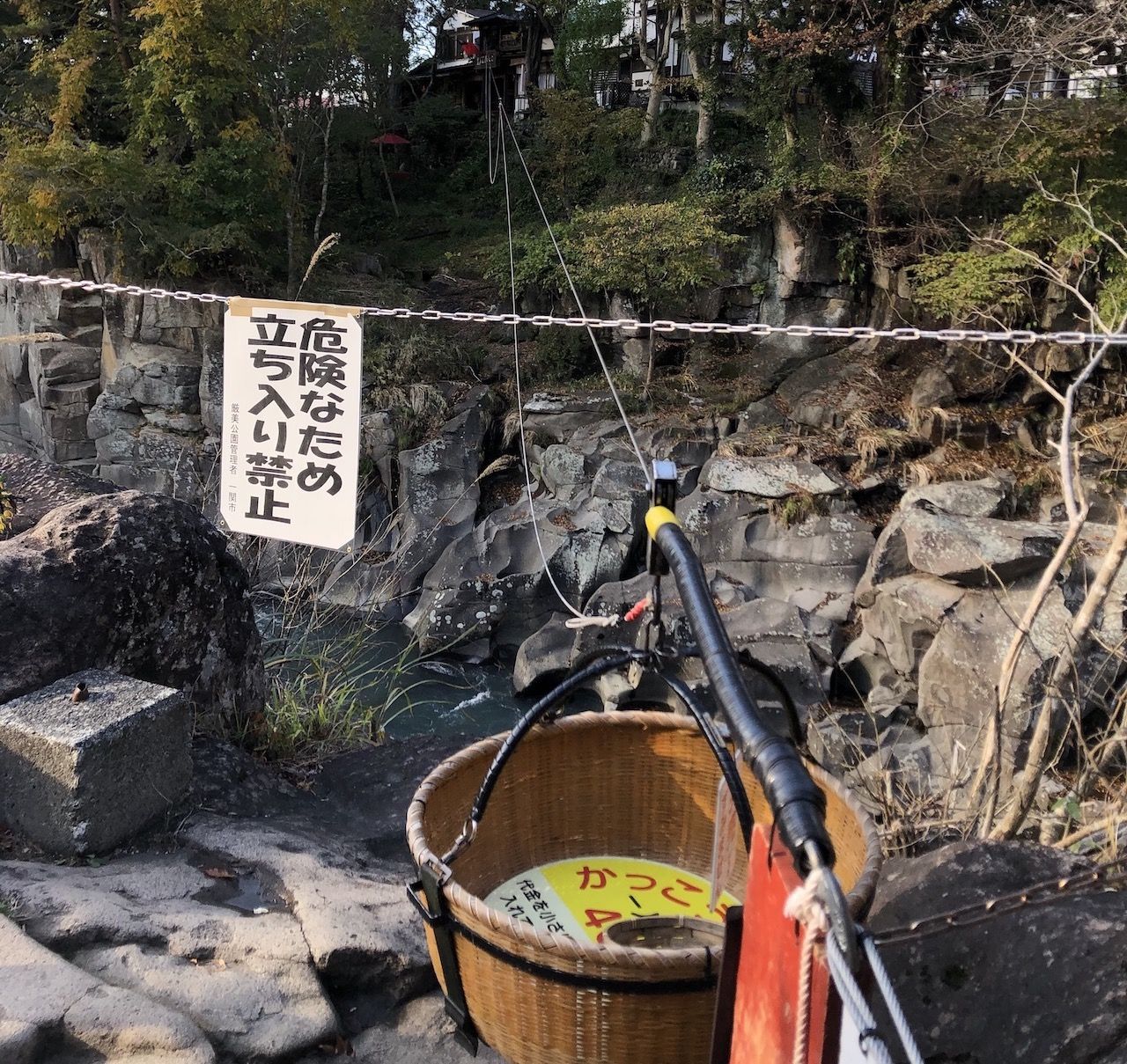
Photo: Aryana Azari
The gorge is known for “flying dango” — dango are a type of Japanese dumpling in the mochi family. The name “flying dango” comes from the method to retrieve the dango: On one side of the gorge is a gazebo where a basket is hanging on a cable that goes to the opposite side, and to order dango, you have to put 400 Japanese yen into the money holder inside the basket, knock on the wooden board next to the basket with a hammer to let the shop workers know you’re ready, and wait as the workers pull the basket across and then send it back with your dango inside.
Close to Ichinoseki is the town of Hiraizumi, and while it’s also popular for mochi, it’s even more so for its historical and cultural sites that earned it a designation as a Unesco World Heritage site — which also happened to be Tohoku’s first UNESCO site. While all its sites deserve a spot on your cultural Tohoku tour, two stand out in particular. First is Mōtsū-jī Temple, a sprawling temple complex founded in the seventh century by the priest Ennin and used by the Fujiwara clan. All the original buildings have been destroyed, and what’s left are the ruins of certain structures like gates and temples, several reconstructed shrines, and the original Pure Land garden — called such because it was designed in accordance with the Buddhist concept of pure land, the world of the Buddha. In addition to its historical significance, the complex is full of greenery where you can pop down for a picnic, read a book, or even take a snooze.
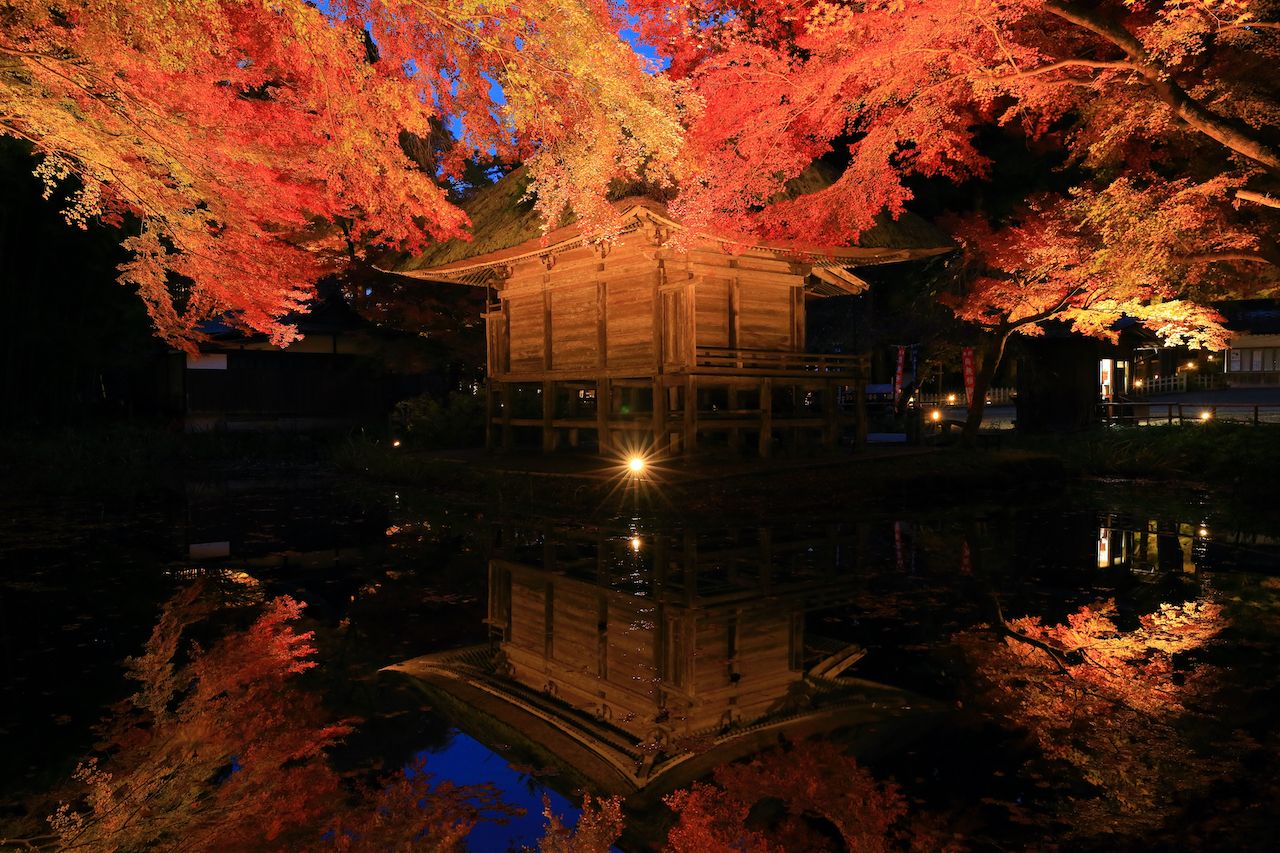
Photo: yspbqh14/Shutterstock
The second is close to Mōtsū-jī Temple, Chūson-ji Temple, also founded by Ennin and commissioned by the Fujiwara clan. Its design represents the Buddhist pure land to console the souls of people who died in two major conflicts that occurred toward the end of the 11th century. As with many older temples, a number of its original structures were destroyed, but some still remain, and others were reconstructed. Chūson-ji contains more than 3,000 national treasures, including the Konjikidō, a golden hall that’s almost entirely covered in gold leaf.
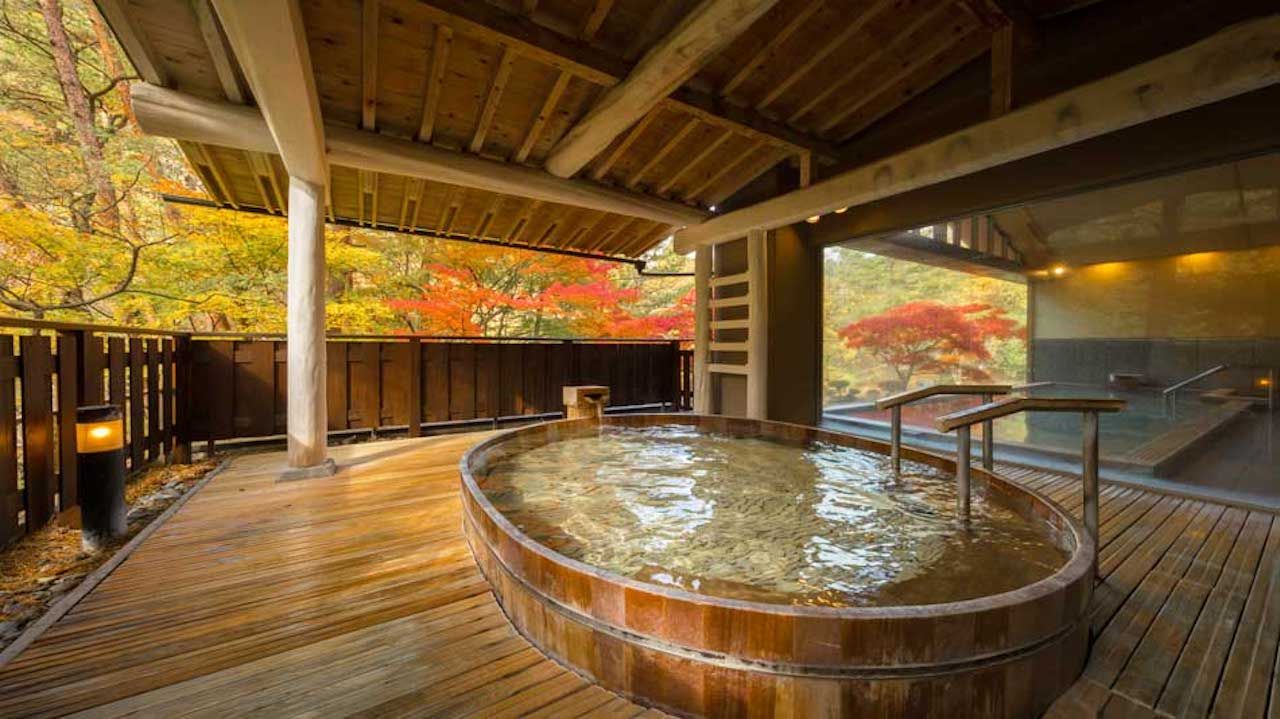
Photo: 花巻温泉/Facebook
Iwate has an abundance of accommodations with onsens, which you can make your base for exploring the prefecture and then have the added bonus of soaking in hot spring water to heal from the day’s activities. Hanamaki is a city right in the center of it all, providing easy access to Iwate’s main sites, and has a train station with trains that’ll take you to the rest of Tohoku and to Tokyo. Within the city is Hanamaki Onsen, a hot spring village, made up of three interconnected hotels — Hotel Senshukaku, Hotel Hanamaki, and Hotel Kyokan — and a serene rose garden with over 6,000 roses of 150 varieties. The three hotels each have rooms from traditional Japanese-style to Western to a hybrid of both, shops, dining areas, and onsens that have both indoor and outdoor portions. Regardless of which one you stay in, you’re allowed to use the facilities at the other three by using the indoor walkways. The best part? Each room comes with yukatas and slippers, so you can walk around as comfortably as can be.